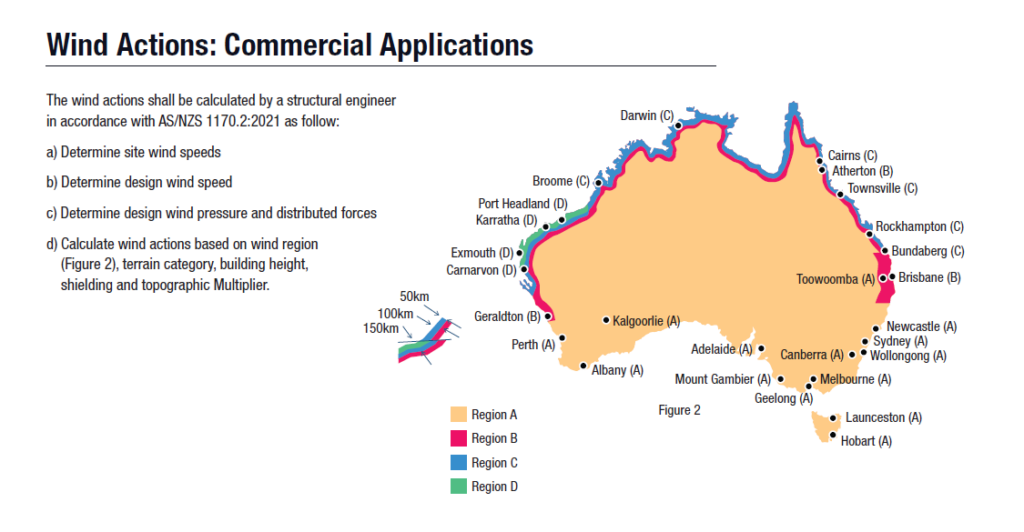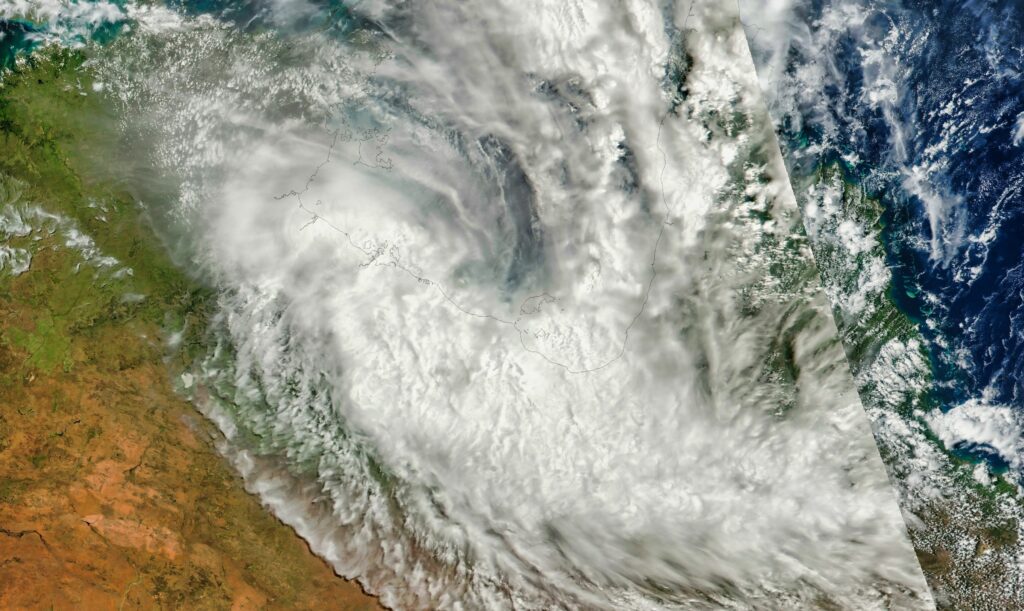When Tropical Cyclone Alfred threatened southern Queensland and northern New South Wales in early March 2025, it sparked discussion about regional building standards, wind classifications, and home resilience, with particular focus on the structural differences between homes in Far North Queensland versus Southeast Queensland and their ability to withstand high winds.
In the wake of the cyclone, there are now calls to cyclone-proof homes as far south as northern NSW. But, what does this all mean for homeowners, as well as for builders, designers and architects?
We spoke with Rohan Madathanapalli, Business Development Manager and Technical Consultant for Bondor Metecno Group about understanding cyclone wind classifications and building codes. In this blog he explains Australia’s complex wind classification system, provides practical guidance for homeowners concerned about their property’s resilience, and how builders and designers should approach cyclone-resistant construction.
Can you explain Australia's wind classification system?
Wind classifications in Australia are a system used to indicate the design wind speed that buildings must withstand based on their geographical location and site conditions. They are categorised into wind regions and cyclonic regions classification systems that guide building design across Australia.
The key difference in classification is that wind regions provide a comprehensive framework while cyclonic regions represent a classification subset focused on cyclone-prone tropical areas.
Wind regions are categorised from A to D based on wind speed and geographical characteristics. Cyclonic regions are in Wind Regions C and D and represent the most extreme wind conditions in Australia, characterised by their vulnerability to tropical cyclones.
At a glance, these are summarised as follows:
Wind region classifications | Description | Cyclonic region classifications |
|---|---|---|
A and B | representing the lowest wind speed areas, typically found in sheltered inland areas or southern Australian states with minimal wind exposure | Not applicable |
C | Coastal strips in the Northern Territory, Queensland (north of Bundaberg) and parts of Western Australia, with wind speeds up to 250 km/h | C1 – wind speeds up to180 km/h C2 – wind speeds up 220 km/h C3 – wind speeds up 250 km/h |
D | Western Australia coastal and inland strips that can experience wind speeds up to 317 km/h | C4 – wind speeds up 317 km/h |
What do homeowners need to know about wind classifications?
Wind classifications reveals a home’s ability to withstand specific wind speeds, helping homeowners better understand wind resilience.
Wind resilience is fundamentally about creating a continuous, engineered path for wind forces to travel from the roof through the building’s structure and into the ground. This distributes and dissipates wind loads, preventing concentrated stress on any single point that could lead to a home’s structural failure. This approach ensures that when high winds strike, the entire building works as a unified system to resist and transfer those forces safely.
To ensure their home’s wind resilience, homeowners should understand their property’s specific vulnerabilities. They should conduct regular inspections, looking for signs of structural weakness such as rust, loose fixtures, or compromised connections. Homeowners should also secure external attachments like carports and awnings, and where appropriate install cyclone screens on windows.
For those in high-risk areas, consulting a qualified building professional is essential. They can provide detailed advice on upgrading structural elements, strengthening roof connections, bracing walls, and improving door and window frame fixings.
The goal is not just compliance, but creating a home that can withstand the increasing severe weather events driven by climate change.
Can I do anything to improve my home's resilience to cyclonic wind if I own an older home?
Yes. Homeowners with older properties who are concerned about their home’s vulnerability should begin with a comprehensive professional assessment to identify structural vulnerabilities and recommendations for upgrades.
This could include roof strengthening using appropriate screws, straps, and braces to ensure the roof can withstand high wind loads. Walls can also be reinforced with techniques like bracing gable end walls and improving overall structural connectivity.
Easy to implement measures can include:
Strengthening door and window frame connections
Installing impact-resistant screens
Upgrading locks and hinges
Sealing potential water entry points
Repair structural damage
Maintain your property’s overall condition
For external attachments like porches and carports, homeowners may require professional assessment to ensure they don’t become potential hazards during severe wind events.
How do solar panels affect roofs during a cyclone?
Solar panels can significantly impact a roof’s wind resistance by increasing the surface area exposed to wind, which increases the total wind load on the roof structure, particularly uplift forces.
If solar panels or their mounting systems are not adequately designed, tested and installed, they can become detached during high winds and turn into dangerous wind-borne debris posing a risk to surrounding property and life.
The way solar panels are attached to the roof, to the battens or rafters, influences how wind loads are transferred to the underlying roof structure. Proper installation is key to circumventing any issues that may arise in cyclonic conditions.
What do builders, designers and architects need to know about wind classifications?
For builders, designers, and architects, the process begins with accurately determining the site-specific wind classification using Australian Standards AS 4055 and AS NZS 1170.2, carefully considering all environmental factors that could influence wind loads.
They must determine site-specific wind ratings, design code-compliant structures, and ensure strong resilience. This includes using wind-rated products, creating continuous load paths, and balancing performance with safety.
Builders should continuously update their knowledge of building codes, consult with structural engineers on complex designs, and stay ahead of evolving environmental challenges. This means understanding not just current standards, but anticipating future resilience requirements driven by climate change and increasingly severe weather events.
When specifying building products, builders should adopt a holistic approach that considers not just wind resistance, but also thermal performance, fire safety, acoustic requirements, material durability, and long-term environmental compatibility.
This ensures the entire building system works together seamlessly to provide comprehensive protection and performance.

What products does Bondor Metecno offer that are appropriate for achieving optimal cyclone ratings?
Bondor Metecno offers several insulated sandwich panels designed for cyclonic regions:
MetecnoSpan®PIR Roofing – panel with PIR (polyisocyanurate) core, suitable for commercial applications and tested for cyclonic wind regions
SolarSpan® Insulated Roof Panel – long-spanning roofing panel with an EPS FR core suitable for residential and commercial use, and tested for cyclonic regions
InsulRoof® Next Gen Corro Roof – Roofing panel with corrugated profile, EPS FR core suitable for residential applications and tested in cyclonic regions
These panels are designed for homes and buildings in cyclone-prone areas, are tested to withstand high wind loads and comply with National Construction Code requirements.
They have been developed in collaboration with Cyclone Testing Station at James Cook University in Central Queensland and are recommended for use in Wind Regions C and D.
How do you test Bondor Metecno panels for cyclone ratings?
Panels are tested using the “Low, High, Low” cyclic testing method to validate their ability to withstand cyclonic conditions. The testing process goes far beyond simple stress evaluation.
The methodology involves subjecting panel assemblies to a carefully designed series of pressure cycles that simulate the complex wind loads experienced during a cyclone. This involves thousands of cycles at lower pressure levels, followed by hundreds at medium pressure, and concluding with a smaller number of high-intensity cycles. Each stage is monitored for potential failure indicators such as fastener pull-up, skin wrinkling, core shear, and joint failure.
This rigorous testing demonstrates that a panel system can endure both fatigue and ultimate wind loads while maintaining its critical load-carrying capacity. These tests give builders, architects, and homeowners confidence in a product’s performance under extreme environmental conditions.
Bondor Metecno’s panels are tested at the Cyclone Testing Station at James Cook University in Townsville, as well as at our own NATA (National Association of Testing Authorities) test facility at Acacia Ridge in Brisbane.
Talk to Bondor Metecno’s technical team for wind classification advice
Bondor Metecno is Australia’s largest manufacturer of CodeMark and FM-accredited insulated roofing and walling panels with distinct core materials available to address any performance requirement across fire, thermal and long spans. Our products are designed to suit Australian conditions and Australian Standards of construction.
For specific guidance on selecting wind-rated products that meet Australian building codes and wind classification requirements, contact us today for expert advice tailored to your specific project and environmental conditions.



